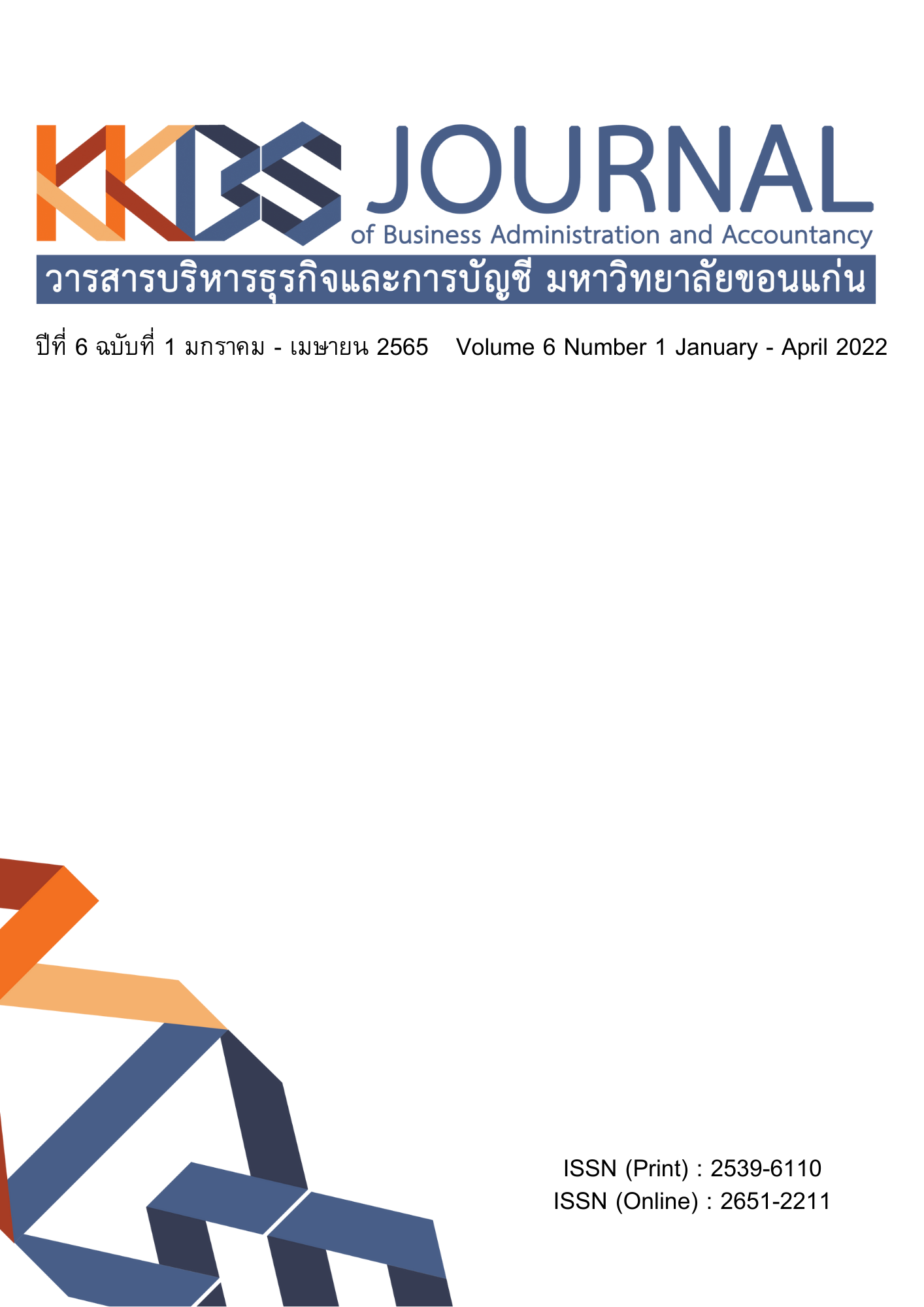Impacts of Working Process Perception of Northern Associate Medical Science Clinic Entrepreneurs on Marketing Success
Main Article Content
Abstract
This independent study was aimed to impacts of working process perception of Northern Associate Medical Science Clinic entrepreneurs on marketing success. Questionnaires were used as a tool to collect data from 101 entrepreneurs but only 96 samples are acceptable (95.05%). The data were analyzed by descriptive statistics consist of frequency, percentage, mean, and inferential statistics which is factor analysis by extraction in principle component analysis before multiple regression analysis.
The results of the study shown that most of respondents were female who have been working in laboratory clinic for 6 - 10 years. There are 4 - 6 employees in Associate Medical Science Clinic. Furthermore, the clinics had no any standard for laboratory. The greatest number of customer is more than 500 persons per month. Almost of the observing clinics have the immunology and clinical chemistry services.
This study uses Hoda Mehrparvar's service business supply chain process performance measurement concept and the marketing success concept consists of four sub-factors: increased gross profit; cost reduction more sales and the number of customers increasing. The study found that perceived of information management and information systems of clinical technology clinics able to explain the perceived success in marketing 79.4 percent. The factor of perceived success in marketing; the gross profit increased, the lower cost, and the increasing number of customers, were found from: perceived of information management and information systems of clinical technology clinics. On the sales increased, there were found from two factors: customer service management and information management and clinical technology clinic information system.
Article Details

This work is licensed under a Creative Commons Attribution-NonCommercial-NoDerivatives 4.0 International License.
The articles published in the journals are the authors' opinions, not the opinion of the editorial team or administrative staff. The articles published is copyright of the Journal of Business Administration and Accounting, Khon Kaen University.
References
Arnett, D.B. & Witmann, C.M. (2014). Improving marketing success: The role of tacit knowledge exchange between sales and marketing. Journal of Business Research, 63(3), 324 - 331.
Bauer, H.H. & Hammerschmidt, M. (2005). Customer - based corporate valuation: Integrating the concepts of customer equity and shareholder value. Management Decision, 43(3), 331 - 348.
Bernstein, D.A. (1999). Essentials of psychology. Boston: Houghton Mifflin.
Chanida P. (2011). Service supply chain processes: development and validation of a multi-item measurement scale. Bangkok: Thammasat Business School, Thammasat University. (In Thai)
Chiang Mai University, Faculty of Medicine. (2018). Outpatient services. Retrieved March 10, 2018, from www.med.cmu.ac.th/hospital/opd/2013/opd (In Thai)
Cooper, R. & Kaplan, R.S. (1991). Profit priorities from activity-based costing. Harvard Business Review, 69, 130-135.
Foster, G. & Gupta, M. (1994). Marketing, cost management and management accounting, Journal of Management Accounting Research, 6, 43 - 77.
Guerreiro, R., Bio, S.R. & Merschmann, E.V.V. (2008). Cost to serve measurement and customer profitability analysis. The International Journal of Logistics Management, 19(3), 389 - 407.
Guntalee R. (2008). Marketing research. Bangkok: Chulalongkorn University Press.
Hair, J., Money, A., Page, M. & Samouel, P. (2007). Research methods for business. London: Routledge.
Harlow, H. (2008). The effect of tacit knowledge on firm performance. Journal of Knowledge Management, 12(1), 148 - 163.
Howard, M.C. (2016). A review of exploratory factor analysis decisions and overview of current practices: What we are doing and how can we improve? International Journal of Human-Computer Interaction, 32(1), 51-62
Ministry of Public Health. (2015). Public health statistics A.D.2015. Bangkok: Strategy and Planning Division, Ministry of Public Health.
Ministry of Public Health. (2018). Public health statistics A.D.2018. Bangkok: Strategy and Planning Division, Ministry of Public Health.
Napattara J. (2018). Relationship between of service excellent strategy and marketing success of spa business in Thailand. Journal of Liberal Arts, Ubon Ratchathani University, 14(2), 87-108. (In Thai)
Prapaipit, S. (2013). International accounting systems. Bangkok: Kasetsart University Press. (In Thai)
Puangthong, K. (2013). Laboratory investigation. Retrieved March, 11, 2018, from http://haamor.com (In Thai)
Ratchakitcha. (2015). Determining the characteristics of medical establishments and service characteristics of hospitals, B.E. 2558 (2015). Vol. 132, No.26, 23-32.
Shahin, A., Mehrparvar, H. & Karbasian, M. (2014). Performance indicators in a service supply chain. International Journal of Economy, Management and Social Sciences, 3(10), 582-588.
Soravit, P. (2012). Competitive advantage and entrepreneurship effect to marketing success of Thailand tourism business. Nakhon Ratchasima: Faculty of Business Administration Rajamangala University of Technology Isan. (In Thai)
Stone, M. & Woodcock, N. (2013). Interactive, direct and digital marketing: A future that depends on better use of business intelligence. Journal of Research in Interactive Marketing, 8(1), 4-17.
Van Raaij, E.M. (2005). The strategic value of customer profitability analysis. Marketing Intelligence & Planning, 23(4), 372-381.
Zeithaml, V.A., Trust, R.T. & Lemon, K.N. (2001). The customer pyramid: Creating and serving profitable customers. California Management Review, 43(4), 118-142.


